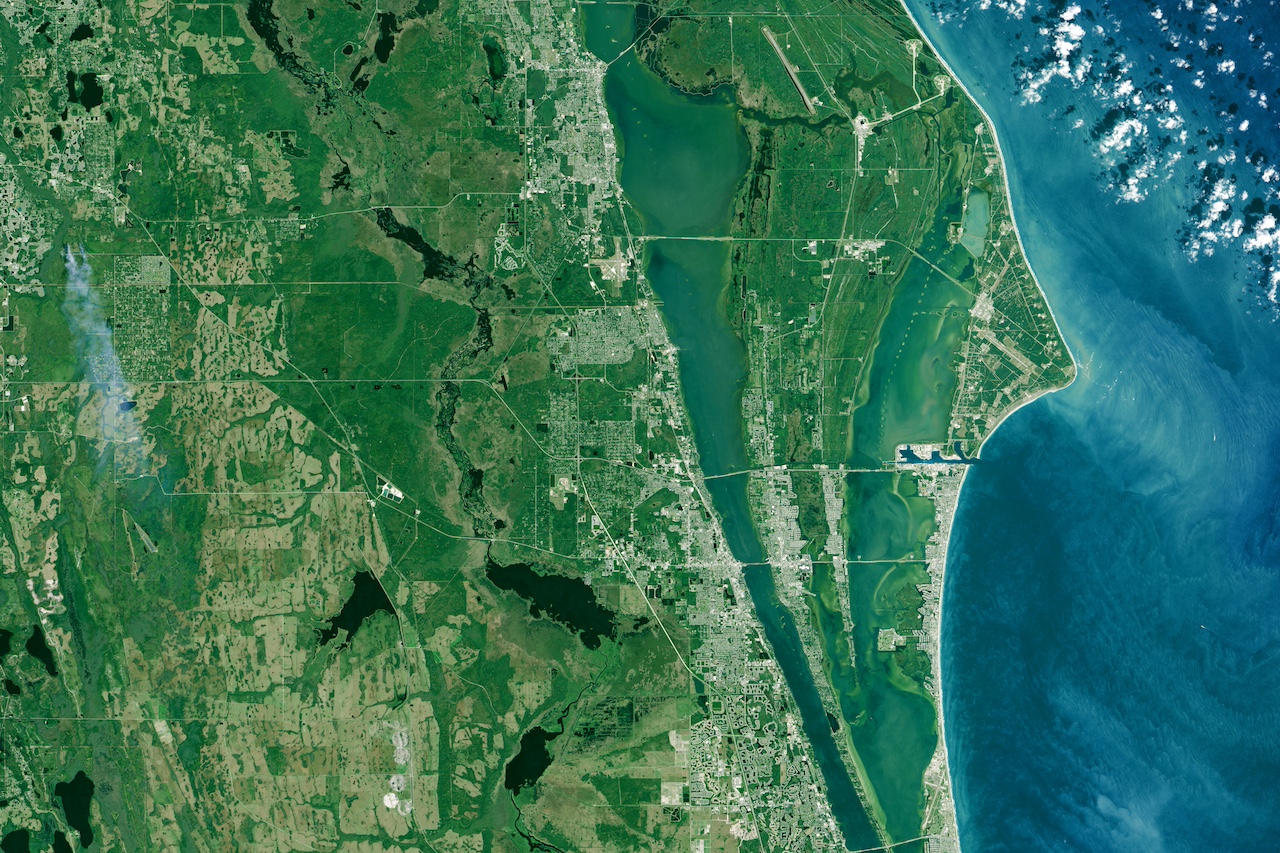News | January 23, 2024
NASA Team Sharpens Vision for Future Sea Level Research

Rising sea levels in 2015 gradually affected the high tide line near the Kennedy Space Center in Florida. Image credit: NASA Earth Observatory
The question: What are the major developments in some of NASA’s ongoing sea level research?
The answer: The NASA Sea Level Change Team met in Pasadena, California, in September 2023, for three days to discuss the team’s latest work. Topics included mapping coastal flooding, the causes of high-tide flooding, and why such flooding might be accelerating.
One researcher’s presentation explored inundation mapping – showing potential flooding in coastal regions if infrastructure fails. The project seeks to make these resources available globally. The team behind the research discussed initiatives to expand their reach to coastal communities vulnerable to sea level rise.
Part of this is working with organizations like the U.N. Rising Nations Initiative, the World Bank Climate Change Knowledge Portal and the Practitioner Exchange for Effective Response to Sea Level Rise (PEERS) to connect with an international audience.
The scientists also discussed high-tide flooding – which occurs when sea level rise combines with local factors to push water levels above the normal high tide mark – in coastal communities and its multiple causes, including rising sea levels, as well as the differences from season to season and from year to year. One researcher detailed the causes of accelerated flooding, including local sea level rise, vertical land motion, and shifting ocean circulation.
The sea level team scientists also outlined their next steps and some new goals for future research.
Other researchers offered updates on the OPERA project (Observational Products for End-Users from Remote Sensing Analysis). This project satellites to map surface water, terrain and topography, with new products in development or in the review and production stages.
Other projects would create nearly fully automated, continent-wide digital surface models that show flooding and topography, and expand studies of annual sea level variability to cover more coastlines and offshore locations.
Why it’s important: The NASA Sea Level Change Team will hold its 10-year anniversary meeting next year. Leading up to it, the team is reassessing and refining research goals and putting together new data products and resources.
Future work will include collaborations with sea level organizations and agencies on the international, national, and local level, and the expansion of sea level data for community use. The sea level team will continue to develop useful and applicable science for planners, governments and the general public.
